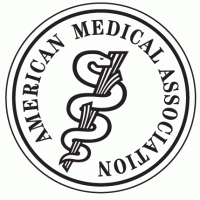Chiropractors are trained doctors who specialize in detecting and reducing misalignments of the spine called vertebral subluxation that interfere with central nervous system function. Subluxations can cause inflammation of the joint and nerve root as well as lack of motion which can cause joint degeneration. The natural healing abilities attributed to chiropractic care was first developed by a man named D.D. Palmer in 1895 after relieving nerve impingement due to misalignment of a patients spine. Today there are more than 77,000 licensed Doctors of Chiropractic (DC) in the U.S. alone, plus thousands more practicing in countries throughout the world. (1) As one of the most popular types of alternative treatment approaches (meaning those that are non-medical), millions of people each year seek chiropractic care.
History of Chiropractic Care
 Osteopathic medicine was founded by Andrew Taylor Still about 140 years ago. Doctors of osteopathy (DOs), like chiropractors, receive extensive additional training in spinal adjustments. However, only a small percentage of DOs are really skilled in this area as they have chosen a more conventional allopathic model, which includes more of an emphasis on drugs and surgery rather than diet and lifestyle changes.
Osteopathic medicine was founded by Andrew Taylor Still about 140 years ago. Doctors of osteopathy (DOs), like chiropractors, receive extensive additional training in spinal adjustments. However, only a small percentage of DOs are really skilled in this area as they have chosen a more conventional allopathic model, which includes more of an emphasis on drugs and surgery rather than diet and lifestyle changes.
The natural healing abilities attributed to chiropractic care was first developed by a man named D.D. Palmer in 1895. According to records regarding the first chiropractic treatments, it all started when Harvey Lillard — a man who was deaf in one ear — had seen Dr. D.D. Palmer for help with his condition.
Mr. Lillard was hoping that D.D. Palmer had something up his sleeve to help his deafness. When Palmer learned that Lillard suffered a head injury that preceded his hearing condition, he evaluated his spine and noticed that a vertebra in the upper back seemed wildly out of alignment. (24) According to Palmer:
I had a case of heart trouble which was not improving. I examined the spine and found a displaced vertebra pressing against the nerves, which innervate the heart. I adjusted the vertebra and gave immediate relief — nothing ‘accidental’ or ‘crude’ about this. Then I began to reason if two diseases, so dissimilar as deafness and heart trouble, came from impingement, a pressure on nerves, were not other disease due to a similar cause? Thus the science (knowledge) and art (adjusting) of Chiropractic were formed at that time.
Palmer coined his manual therapy technique “chiropractic,” which comes from the two Greek words cheiros and praktikos (meaning “with hands”). While D.D Palmer is considered to be the first Chiropractor, records show that similar adjustments have been utilized to help the body heal itself dating back to the time of Hippocrates. Since the time of Palmer, millions of people across the globe have benefited from this manual therapy. In 1897, Palmer helped establish the very first chiropractic school, located in the U.S. and now called the Palmer College of Chiropractic (formerly the Palmer Chiropractic School and Cure).
Palmer opened the first chiropractic school in 1897. In 1910, the Flexner Report, which was funded by the Carnegie and the Rockefeller Foundations, set a new tone for medicine and led to the systematic undermining of natural medicine. In the ’60s, there was a persistent tendency to suppress physicians from referring patients to chiropractors — so much so that Dr. Chester Wilk ended up filing an antitrust suit against the American Medical Association (AMA) in 1976. The lawsuit dragged on for more than a decade, but Wilk was ultimately successful. In 1987, the court ruled that the AMA had engaged in an unlawful conspiracy in restraint of trade to contain and eliminate the chiropractic profession.
Chiropractor Education & Licensure
According to the International Chiropractors Association, “Chiropractic is the fastest growing and second-largest primary healthcare profession.” There are approximately 95,000 doctors of chiropractic (DCs) practicing around the world, and more than 10,000 students currently enrolled in chiropractic education in the U.S. alone.
Once their training is completed, many Chiropractors feel that they specialize in a combination of science, art and philosophy, practicing a holistic system of health that takes into account the many different aspects of their patients’ lives. Once graduated from a school of chiropractic, doctors of chiropractic can work in private practice or in clinical settings, specializing in areas including work-place safety, stress management, injury prevention, postural correction and nutritional counseling.
The formal education required to become a Chiropractor focuses on teaching practitioners to effectively locate patients’ vertebral subluxations and remove them through the use of specific adjustment techniques. Chiropractic education also emphasizes the practice’s underlying philosophy, that the body wants to and is capable of healing itself.
How many years of schooling does a Chiropractor receive?
 According to the American Chiropractic Association, “Educational and licensing requirements for doctors of chiropractic (DCs) are among the most stringent of any of the health care professions.” DCs must complete four years of doctoral graduate school in order to qualify for exams that must be passed before becoming licensed. Prior to beginning graduate studies in chiropractic training, four years of pre-medical undergraduate college education must be completed. Undergraduate courses must include biology, inorganic and organic chemistry, physics, psychology and related lab work.
According to the American Chiropractic Association, “Educational and licensing requirements for doctors of chiropractic (DCs) are among the most stringent of any of the health care professions.” DCs must complete four years of doctoral graduate school in order to qualify for exams that must be passed before becoming licensed. Prior to beginning graduate studies in chiropractic training, four years of pre-medical undergraduate college education must be completed. Undergraduate courses must include biology, inorganic and organic chemistry, physics, psychology and related lab work.
Since its official beginning more than 100 years ago, chiropractic education and care has since come a very long way. While in the past certain medical doctors may not have spoken positively about the field of chiropractic, speculating that chiropractic adjustments weren’t necessarily as effective as treatments like drugs or surgery, today things are different. Many MD’s regularly refer their patients to Chiropractors for help with a range of symptoms, everything from migraines and joint pain, to constipation and visual problems.
Chiropractic care is considered an alternative treatment approach to taking pain-killing drugs or undergoing surgery. Many people don’t realize that similarly to medical doctors, Chiropractors spend years in training — thoroughly learning about subjects like anatomy, physiology, nutrition and holistic health.
When it comes to treating all-too-common complaints such as low back pain, organ dysfunction or other chronic disease symptoms, what is a Chiropractor capable of doing to help? Evidence shows that the influence of a chiropractic adjustment goes well beyond bad backs. Many unwanted symptoms suffered by children and adults today can be helped through the neurological influence of an adjustment.
Complementary to the adjustment, many Chiropractors today also offer their patients more than manual spinal adjustments: They are also well-versed in a variety of nutritional therapies, herbal supplementation, spinal physical therapy and stress management. They also work with other practitioners such as massage therapists or acupuncturists. Meanwhile, Chiropractors offer one of the best ways to prevent ailments, as opposed to only treating them.
Chiropractors work in the field of complimentary or alternative medicine, treating patients by performing hands-on chiropractic adjustments in order to help with postural restoration, spinal alignment, nervous system function and maintenance of health. Chiropractic physicians are trained to use their hands as their “instrument,” carefully adjusting the joints of the body, especially the spine.
In fact, Chiropractic is one form of alternative medicine that are considered manual therapies. Rolfing, integrative manual therapy, massage therapy and myofascial release technique are also different manual therapies.
Is a Chiropractor a doctor? Yes, Chiropractors hold a degree as a Doctor of Chiropractic (DC). (26) They are not medical doctors (MDs) because they do not write their patients prescriptions or perform surgeries. Chiropractors uniquely help their patients heal through natural means by removing interferences from the central nervous system. The education that DCs receive focuses on all basic sciences, anatomy and physiology, with special emphasis on the health and function of the spine and central nervous system.
What are a Chiropractor’s specialties?
You might think of chiropractic adjustments as only being helpful for treating problems like systematic pain (such as back pain) or a stiff neck, but that’s far from true. In many ways, Chiropractors have a “stress-centered” view of health: the underlying belief of chiropractic care surrounds the fact that the body has an innate ability to heal itself once interferences or “obstacles” (sources of stress that stand in the way of well-being) are removed. (2)
Interferences that can negatively impact the nervous system and therefore diminish overall health, including the following: poor posture, poor nutrition, physical and emotional stress, muscular tension and tightness, and illness caused by a number of issues, including poor digestive health.
What is a Chiropractor hoping to do when they perform adjustments on patients?
Restoring motion and alignment of the spine is the first step in helping the rest of the body to self-regulate, self-maintain and self-restore, due to the spine’s direct neurological influence on the rest of the body. The American Chiropractic Association (ACA) states that ” The benefits of chiropractic care extend to general health issues, since our body structure affects our overall function.” (3)
- To simplify a complex process, they are tapping into the recuperative abilities of the body by restoring the relationship between a properly aligned spinal column and a well-functioning nervous system.
- Chiropractors are trained to carefully analyze the spine to determine the presence of vertebral subluxation, which is when a spinal bone misaligns, causing interference to the nervous system and nerve irritation. In other words, chiropractic care is beneficial because it allows for better communication throughout the body, especially between the spine and the brain, also called the Central Nervous System (CNS).
- The CNS is the controller of someone’s overall health, considering it regulates communication and coordination throughout the body that affects every organ, tissue and cell. You can think of the brain as the main commander (or control center) of the CNS and the whole body. The nervous system sends chemical messages to and from the brain via the spinal cord, which is not the actual backbone (vertebra), but the cord that runs within the bones in the back and contains threadlike nerves that branch out elsewhere.
Top 7 Benefits of Chiropractic
Does Chiropractic work? And for what ailments?
According to Dr. Dan Sullivan — Doctor of Chiropractic (DC), speaker, author and one of the most well respected holistic health experts in the country —
One of the biggest challenges that Chiropractors face is the public’s perception of Chiropractic. Many still believe that the benefits of chiropractic adjustments are limited to back and neck pain relief. But that is just a small portion of the benefits that chiropractic care delivers. Some of the greatest evidence today shows exactly why Chiropractors have been seeing amazing results in their offices, each week, for over 120 years, with symptoms and conditions seemingly unrelated to the spine.
It all comes back to how Chiropractic positively influences the nervous system. From improved breathing and digestion, to increased immunity, better organ function, fertility and so much more, we now know from a scientific and research standpoint how adjustments can have such far-reaching benefits.
Patients who can benefit from visiting a Chiropractor include those with symptoms or diseases such as:
- Back pain (4)
- Neck pain (5)
- Migraines or frequent headaches (6)
- Asthma (7)
- Sciatica (8)
- Back pain due to pregnancy (9)
- Acid Reflux (10)
- Colic (11)
- Frozen shoulder (glenohumeral or acromioclavicular (AC) joint) (15)
- Joint pains and osteoarthritis (16)
- Neurological problems such as epilepsy (17)
- Brain/Central Nervous System dysfunction
- TMJ
- Injuries and disorders of the musculoskeletal system, involving the muscles, ligaments and joints
- Indigestion or upset stomach
- Dental or visual problems
- Injuries due to accidents or trauma
Safety of Chiropractic Care
Is visiting a Chiropractor safe? The short answer is yes, very safe. You might be thinking that chiropractic adjustments sound risky, considering how sensitive the spine and spinal cord are to overall health and function. But in fact, chiropractic has been shown to be one of the safest treatment approaches in healthcare today. Chiropractic adjustments are very precise and careful, which is why DCs need to receive extensive training to ensure safety.
According to The National Institute of Health, “A 2007 study of treatment outcomes for 19,722 chiropractic patients in the United Kingdom concluded that minor side effects (such as temporary soreness similar to that which can be experienced after a workout) after cervical spine manipulation were relatively common, but that the risk of a serious adverse event was ‘low to very low’ immediately or up to 7 days after treatment.” Another study found that “there was no evidence that visiting a Chiropractor put people at greater risk than visiting a primary care physician.” (27)
While chiropractic treatment is overall very safe, it’s still possible to experience some potential adverse effects. The risks are low, but may include some temporary soreness, stiffness or tenderness following adjustments. Mild side effects typically go away on their own within about 24 hours.
Also keep in mind that a major advantage of visiting of a Chiropractor for help with pain or other symptoms is that you won’t be treated with drugs, which often cause a number of side effects. You may also be able to avoid having unnecessary surgery, which isn’t always effective and can pose its own risks.
In recent years, there’s been some concern in the media over whether chiropractic care could increase the risk of more serious side effects, such as stroke, neurological problems, internal bleeding or vertebral artery dissection. A number of studies have found no evidence that there is any link between chiropractic adjustments and suffering from a stroke. (28, 29)
How Children Can Benefit From Chiropractic
A large portion of DeMoss’ patients are children. They don’t come in for pain issues, but rather your typical childhood problems such as earaches, allergies, and asthma, for example.
“Children are healing machines. As long as you get things properly lined up, their metabolism and capacity to heal is in there,” he says. “Sometimes you need to do more than cleaning up the diet and adjusting it.
Sometimes they need to be detoxified, whether it was from some type of possible toxic vaccine or from eating toxic foods. You’ve got glyphosate from GMOs …. preservatives … food colorings and additives … bromines.
You’ve got all these different things that can contribute to lowering the vibration of that patient’s healing potential, i.e. children …
It’s sad because I’ll see kids that come to me and it’s the same story over and over. It’s like, ‘He’s on his 12th round of antibiotics,’ and I’m thinking to myself, ‘Why would you continue to do something if it didn’t work the first, second, third, or even fourth time? Why do you keep doing it?’
I’ve never taken an antibiotic. I’m fortunate. I wouldn’t take it unless I was on my death bed. The microbiome has become a hot topic lately. I’ve always known about that … When you just indiscriminately use an antibiotic … you’re destroying part of your … immune function.
The more antibiotics these kids take, the weaker their immune systems and the worse the symptoms get. That’s what I do as a chiropractor. I’m really good about adjusting. But I’m really an articulate teacher. I make it so that people can understand it.”
Not All Chiropractors Have the Same Philosophy
According to DeMoss, “chiropractic is like brushing your teeth;” it’s something you need to do on a regular basis to maintain the life of your spine, because regular activities, such as chronic sitting, can contribute to its functioning less than optimally. Granted, some chiropractors focus primarily on pain and injuries, and do not have the full skill set required to address issues like allergies or disease. So it’s important to make sure the chiropractor you choose has the appropriate vitalistic philosophy.
Most of DeMoss’ patients come to him via word of mouth, and this is perhaps one of the best ways to find a good wellness chiropractor. You may also want to find out if he or she is trained in any other treatment modalities, such as muscle testing, applied kinesiology, or neuroemotional technique (NET). There are literally dozens of different techniques that can have a profound impact on addressing the bioenergetic component of disease, not just the structural.
Tips for Choosing a Wellness Chiropractor
- Ask your friends for a recommendation. A friend who knows both you and the chiropractor may be able to judge whether your health philosophies and personalities are compatible.
- Meet the doctor. Many chiropractors will agree to a no-cost consultation to determine whether you are a good match. To make this visit as productive as possible, here are a few things to consider:
1.Does the practice focus on vertebral subluxation and wellness? Physical, biochemical, and psychological stress may result in spinal subluxations that disrupt nerve function and compromise your health. If you’re looking for a wellness chiropractor, it’s essential that this be the focus.
Some chiropractors confine their practice to the mechanical treatment of back and neck pain, and this is something you need to be aware of beforehand.
2.Does the doctor “walk the talk”? If he or she is overweight, looks unhealthy, or does not live a healthy lifestyle, this speaks volumes regarding their commitment to wellness.
3.Do the two of you “click”? Do you like each other? Do you communicate well? Avoid a doctor who seems rushed, talks down to you, or seems disinterested in listening to your concerns.
4.Does the doctor use objective assessments of nerve function? Since your care is not based just on addressing pain, your chiropractor should be using some form of objective assessment of your nerve function, as spinal subluxations can sometimes be asymptomatic.
Non-invasive instruments that measure the electrical activity in your muscles, and/or a thermal scanner that evaluates the function of your autonomic nervous system can be used, for example.
5.What treatment techniques are used? Chiropractic techniques include low-force adjustments by hand, and more forceful adjustments using instruments. Ask which technique would be used on you, and if you have a preference, make sure the doctor is willing to use it.
As mentioned earlier, many chiropractors are also trained in other complementary techniques, so ask what else your doctor may have in his or her tool bag.
Many are confused about the benefits and value of chiropractic treatment. According to Dr. Billy DeMoss, a chiropractor with a practice in Newport Beach, who believes chiropractic is vastly underutilized.
He’s also the founder Cal Jam, one of the largest chiropractic teaching events in the world. I will have the privilege of speaking there later this year. Many will only consider chiropractic when they have back or neck pain, but its scope actually goes far beyond that.
“I try to get people to understand that your nervous system and your brain control every function of your body,” he says.
“When we have a condition in chiropractic we call subluxation, which is misalignment or dysfunction in the spine as far as mobility is concerned, it can cause nerve interference, which will interfere with the expression of intelligence that flows over the spinal cord and nerves.
It can contribute not only causing pain that most people perceive as a chiropractic problem but also can cause organs not to function 100 percent.”
Chiropractic as Preventive Medicine
Research by Dr. Dean Harrison and others suggests chiropractic treatments can help prevent progressive spinal degeneration, i.e. osteoarthritis or disc disease. Just like regular dental care will prolong the useful life of your teeth, getting regular chiropractic treatments can do the same for your spine.
Your spinal column, the vertebrae, and the discs, also protect your most delicate and important system — your nervous system — and impingements can contribute to a number of health problems and ailments.
According to DeMoss, anything you do to protect and nurture our spine will promote “greater expression of nerve intelligence” and “a higher vibrancy in health.”
“Healthcare is really about doing everything you can to get the body back in alignment, not only chemically but also spiritually and mentally.
Where I think chiropractic shines is that we address the cause of the problem. Somebody might have high blood pressure. Their high blood pressure is not due to the fact that they [lack] high blood pressure medication.
Your child might have asthma, but it’s not because he’s got a shortage of albuterol; an ear infection is not a shortage of amoxicillin. Those things have their place in a crisis situation. But [chiropractors] don’t look at the symptoms; we look at what caused the symptoms.
Many times if there’s nerve interference lowering the expression and function of organs, it can contribute to the body not functioning at 100 percent, which leaves it more susceptible to, as we in chiropractic say, ‘Dis-Ease’ and then the body becomes sick or symptomatic.
What we like to do is look at the individual holistically and see what’s going on with their nervous system. “
Corrective Chiropractor
A corrective chiropractor is going to be focused primarily on the structure of your spine. Just like with your blood pressure, heart rate and body temperature we all have an ideal or average that is agreed upon for what is best for the body to optimally function at. The structure of your spine is the same. Looking from the front your spine should be straight. All chiropractors and medical doctors understand this. Looking from the side it should have three curves; forward in the neck, backward in the mid-back and forward in the low back. Unfortunately for whatever reason, the medical community has yet to understand, despite their own research showing, that the loss of or normal curves in the spine is indicative of a deviation from normal. This deviation can cause symptoms like neck pain, back pain, headaches, sciatica and other painful symptoms. This is why, instead of treating based only on symptoms, a structurally focused chiropractic will treat with the goal of making measurable changes in the structure of the spine.
This can only be determined if structural radiographs are taken before AND after to measure the improvement. It is common for traditional chiropractors to take x-rays of the area of complaint, but only a structurally focused chiropractor will take a full series of each section of the spine (neck, mid-back, low back) to determine any shift away from the ideal structure of the spine.
Ultimately both a traditional chiropractor and a structural corrective chiropractor are treating the patient with safe and effective adjustments. The difference is that some patients prefer to have complete foundational chiropractic care instead of the minimum necessary to get them out of pain. Call Corrective Chiropractic in Greenville, NC today and set up a free consultation to discuss if Structurally Focused Chiropractic is right for you.
Sources:
- https://articles.mercola.com/sites/articles/archive/2016/02/28/wellness-chiropractic.aspx
- https://draxe.com/what-is-a-chiropractor/
Chronological History of Events Related to Chiropractic Healing

Google Scrubs Search Results Clean of Natural Health Sites and Begins Manipulating Autocomplete Function to Steer Users from Natural Health

District Judge Susan Getzendanner found the American Medical Association Guilty of a Conspiracy Against Chiropractors to Eliminate them Entirely.





